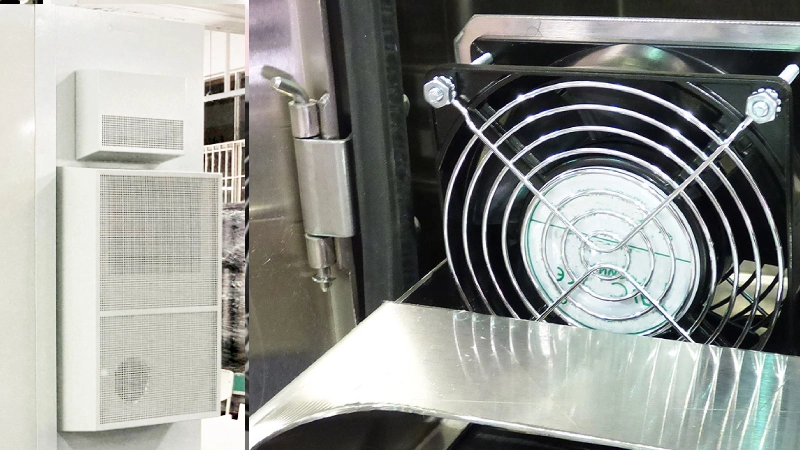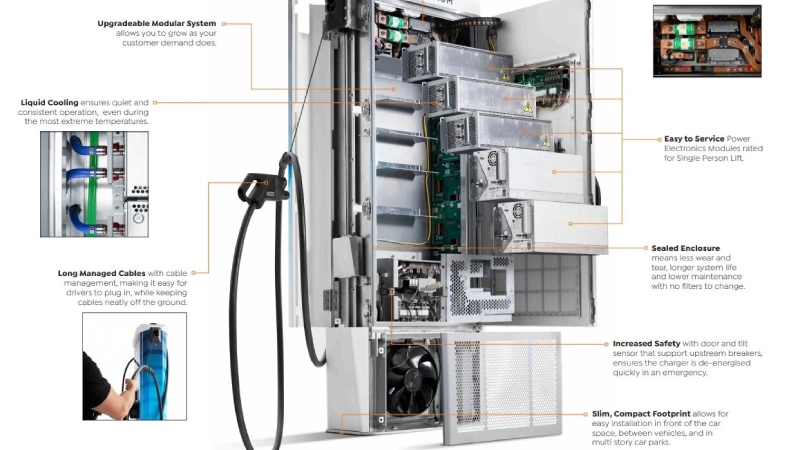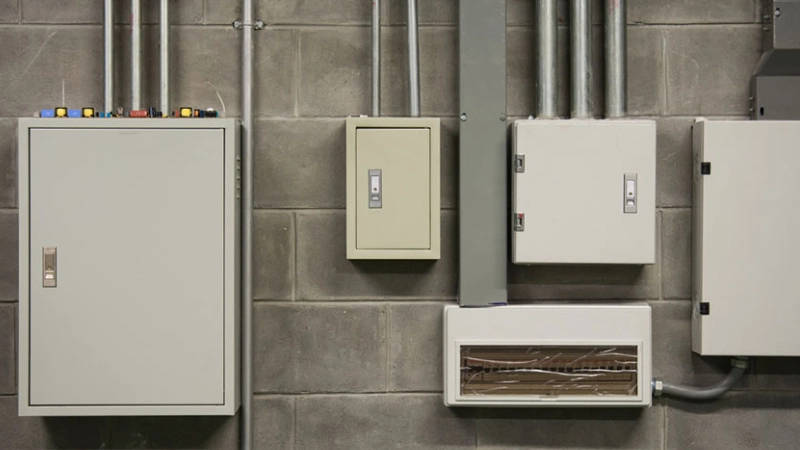Learning to remove wires from a terminal block properly is a fundamental skill for anyone working with electrical systems. Knowing the correct procedure ensures safety and prevents damage, whether you’re troubleshooting, upgrading, or replacing components.
This guide will walk you through the simple steps involved in safely and effectively disconnecting wires from various types of terminal blocks. We’ll cover essential tools and best practices to make your electrical work easier and more secure.
What are Terminal Blocks?
Terminal blocks are modular, insulated electrical connectors designed to secure and connect two or more wires together. They provide a safe, organized, and reliable way to manage complex electrical circuits, facilitating power distribution, signal routing, and control wiring.
Essentially, they serve as a central hub where multiple wires can be easily connected, disconnected, and maintained without the need for soldering or direct splicing.
What is Wire for Terminal Blocks?

Wires for terminal blocks are essentially the electrical conductors that facilitate the connection within the block. The choice of wire depends on several factors, including the electrical current and voltage requirements of the circuit, the environmental conditions, and the type of terminal block being used.
Generally, these wires are made of copper, due to its excellent conductivity, and are available in various gauges (thicknesses) to accommodate different current loads.
The two primary types of wires used with terminal blocks are:
Solid Wire:
- Consists of a single, solid strand of metal conductor.
- Offers good mechanical strength and is less prone to corrosion.
- Often preferred for fixed installations where the wire will not be moved frequently, such as in residential or commercial building wiring.
- Generally easier to insert into screw-clamp terminal blocks because it holds its shape well.
Stranded Wire:
- Composed of multiple thinner strands of wire twisted together to form a single conductor.
- Offers greater flexibility and resistance to fatigue from repeated bending or vibration.
- Commonly used in applications where movement is expected, such as in industrial machinery, portable devices, or automotive wiring.
- For optimal connection and to prevent fraying, especially in screw-clamp or spring-clamp terminal blocks, stranded wires are often terminated with ferrules. A ferrule is a metal tube crimped onto the end of the stripped wire, bundling the strands together for a secure and reliable connection.
How to Remove Wires From Terminal Block?

Safely and effectively removing wires from a terminal block is a crucial skill for anyone working with electrical systems. Whether you’re performing maintenance, upgrading a circuit, or troubleshooting an issue, knowing the correct procedure will prevent damage to the wires or the terminal block itself, and most importantly, ensure your safety.
The process generally depends on the type of terminal block you are dealing with, as different clamping mechanisms require specific approaches.
Step 1: Assess the Terminal Block Type
Before attempting to remove any wires, it is essential to correctly identify the type of terminal block you are working with. The most common types include screw-clamp, spring-clamp, and push-in (or push-wire) terminal blocks. Each type employs a distinct method for securing the wire, which in turn dictates the removal procedure. Incorrectly trying to pull a wire from a screw-type terminal block without loosening the screw, for instance, can strip the wire, damage the screw, or even break the terminal block.
Take a moment to visually inspect the terminal block. Screw-clamp terminals will have visible screws that tighten down on the wire. Spring-clamp terminals often have a small slot next to the wire entry point for a screwdriver or special tool to open the spring. Push-in terminals typically allow for direct insertion, and sometimes require a small tool or a specific button press for removal. Understanding these visual cues is the first critical step.
Step 2: Prepare for Safe Removal
Safety should always be your top priority when working with electrical components. Before touching any wires or the terminal block, ensure that the power supply to the circuit is completely disconnected. This means turning off the breaker at the main panel or unplugging the device. Failure to do so can result in severe electrical shock, burns, or even death.
Once the power is off, it’s a good practice to use a voltage tester to confirm that there is no residual current in the wires or the terminal block. This extra step provides an added layer of safety and peace of mind. Also, ensure you have the appropriate tools for the specific terminal block type, such as the correct size screwdriver (flathead or Phillips), a specialized spring-clamp tool, or needle-nose pliers.
Step 3: Remove Wires from Screw-Clamp Terminal Blocks
For screw-clamp terminal blocks, the removal process is relatively straightforward. Locate the screw associated with the wire you wish to remove. Using a screwdriver of the appropriate size and type (usually a flathead or Phillips), turn the screw counter-clockwise to loosen the clamping mechanism. You will typically feel the screw become less resistant as it loosens.
Once the screw is sufficiently loosened, the wire should be free to be gently pulled out of the terminal. Avoid pulling forcefully, as this can damage the wire strands or the terminal block. If the wire doesn’t come out easily, try loosening the screw a bit more. After removal, you can re-tighten the screw to keep it in place if no new wire is being inserted immediately.
Step 4: Remove Wires from Spring-Clamp Terminal Blocks
Spring-clamp terminal blocks utilize an internal spring mechanism to hold the wire in place. To release the wire, you will need to insert a small flathead screwdriver or a specialized spring-clamp tool into the designated release slot or opening, which is usually located directly next to the wire entry point. Applying gentle pressure with the tool will depress the internal spring.
While holding the spring open with the tool, gently pull the wire out of the terminal. Once the wire is removed, withdraw the tool, and the spring mechanism will return to its closed position. It’s important to use the correct size tool for the release slot to avoid damaging the spring mechanism.
Step 5: Remove Wires from Push-In Terminal Blocks
Push-in terminal blocks are designed for quick and tool-less wire insertion, but some designs require a specific method for removal. For some push-in terminals, simply gripping the wire firmly and pulling with a twisting motion can release it, especially with solid core wires. However, this method should be used cautiously to avoid damaging the wire or the terminal.
Many modern push-in terminal blocks include a small button or lever that, when pressed or actuated, releases the internal clamping mechanism. Locate this button or lever, depress it, and then gently pull the wire free. If no such mechanism is apparent and direct pulling doesn’t work easily, consult the manufacturer’s specifications for the specific terminal block model to ensure proper removal without damage.
How Many Wires Can You Put in a Terminal Block?

The number of wires you can put into a single terminal block connection point is a critical consideration for both safety and performance in electrical systems. While it might seem convenient to insert multiple wires into one terminal, it is generally not recommended or allowed unless the terminal block is specifically designed and rated for such an application.
Most standard terminal blocks are designed for a single wire per connection point to ensure a secure and reliable electrical contact.
Attempting to connect multiple wires into a terminal block not rated for it can lead to several problems. It can result in loose connections, increased resistance, overheating, and potential fire hazards due to inadequate clamping pressure on all wires.
For applications requiring multiple connections at a single point, manufacturers offer specialized solutions like multi-level terminal blocks or terminal blocks with multiple wire entry points per pole, which are explicitly designed and tested for such configurations. Always refer to the manufacturer’s specifications and relevant electrical codes to determine the allowed wire capacity for any given terminal block.
Here’s a general guideline for wire capacity in terminal blocks:
| Terminal Block Type | Wires per Connection Point (Standard) | Notes |
| Standard Screw-Clamp | 1 wire | Designed for one solid or stranded wire (often with a ferrule for stranded). Overstuffing can lead to loose connections and overheating. |
| Standard Spring-Clamp | 1 wire | Similar to screw-clamp, engineered for a single wire to ensure optimal spring pressure. |
| Standard Push-In | 1 wire | Typically designed for single-wire insertion. Some specialized push-in connectors might have multiple ports per pole, but these are distinct from a single-entry point. |
| Multi-Level Terminal Blocks | 1 wire per level (e.g., 2 wires total in a dual-level block, but in separate connection points) | These blocks have multiple connection points stacked vertically, effectively allowing multiple wires to be connected in a compact space, but each wire still has its dedicated clamping point. |
| Terminal Blocks with Multiple Entry Points per Pole | 2+ wires (as specified by manufacturer) | Some specialized terminal blocks are designed with larger or multiple openings, explicitly allowing two or more wires of certain gauges to be terminated in a single electrical pole. Always check the product’s datasheet for such ratings. |
Why Wires Are Needed for Terminal Blocks
Wires are absolutely fundamental to terminal blocks because they are the conduits for electrical energy and signals. Without wires, terminal blocks would be inert components with no practical function. The need for wires stems from their role in:
- Conducting Electricity: Wires carry the current and voltage from a power source to various components and loads within a circuit. Terminal blocks provide a safe and organized interface for these connections.
- Creating Circuits: By connecting wires to specific points on a terminal block, complete electrical pathways are formed, allowing power and signals to flow as intended throughout a system.
- Facilitating Distribution and Control: Wires routed through terminal blocks enable the distribution of power to multiple devices or the routing of control signals from sensors to actuators, making complex electrical systems manageable.
- Providing Flexibility for Installation and Maintenance: Wires connected via terminal blocks allow for easier installation, troubleshooting, and modification of electrical systems, as individual wires can be added, removed, or rerouted without affecting the entire circuit.
Conclusion
Removing wires from a terminal block, while seemingly straightforward, requires careful attention to avoid damage and ensure safety. By understanding the different terminal block types and employing the correct tools and techniques, anyone can confidently perform this task.
Prioritizing safety is paramount. Always ensure power is disconnected before working with terminal blocks. This prevents electrical shock and potential damage to the wiring or the block itself.
For all your wholesale terminal block needs, remember to source from a reliable supplier. We offer a wide variety of high-quality terminal blocks to meet diverse industrial and commercial requirements.




